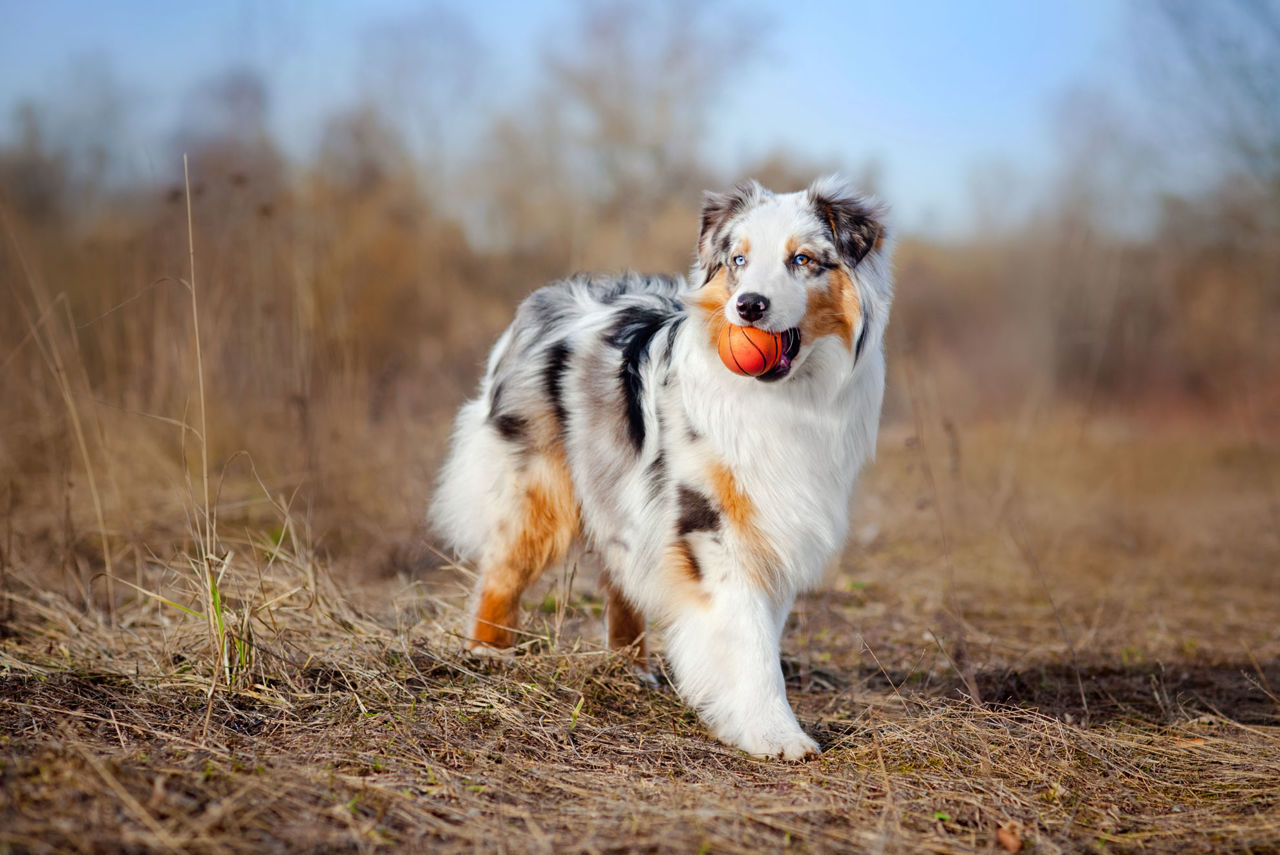Are you wondering if your dog is a carrier for merle coat color, why its coat is not merled despite the merle mutation present, and why caution is important when mating dogs with a merle mutation? You can find answers to these and some other questions regarding the inheritance of merle coat color below.
The merle coat color is characterized by irregularly shaped patches of diluted pigment and patches of solid pigmented coat color and it occurs in many dog breeds. Short part of DNA (i.e. SINE insertion) is responsible for the merle coat as it is inserted into the gene involved in coat pigmentation and consequently affects the development of this coat color. In addition to coat color, the mutation can also affect the color of eyes, nose, pads, and skin. Because of the dark eye pigment discoloration such dogs have blue eyes. Due to random discoloration of the pigment neither, one or both eyes can be blue, or even partially blue. The color of the nose and pads can be black or mottled pink.
Merle coat color is inherited in autosomal, incompletely dominant manner, which means that only one allele associated with the merle coat color is enough to express it. Dogs that inherit two copies of the merle allele have been found to be at higher risk for hearing and vision problems. The mutation is therefore also important in terms of health problems. It is hypothesized that a combination of sufficiently long merle alleles cause the death of pigment cells in the skin, retina, and inner ear, resulting in a predominantly white coat color, hearing and vision problems.
The mechanism of merle coat color formation
In a special organelle (eumelanosome) of skin pigment cells a dark pigment (eumelanin) is formed and stored. The skeletal structure in these organelles has an important role in pigment cells and black coloration. The gene associated with the merle coat color is responsible for the proper functioning of that skeletal structure. Dogs with a change in this gene have an altered skeletal structure in the organelles of the pigment cells, which interferes with the formation of black pigment and consequently reduced pigmentation of the coat. The skeleton of pigment cell organelles is not required for the formation of a yellow-red pigment (pheomelanin), thus the merle color is expressed only in dogs with a dark coat color (black, chocolate, blue and isabela). Dogs that are have only yellow-red pigment do not show merle coloration, so we call them hidden merles. These dogs can transfer merle coat color to their offspring. Merle coat color is also difficult to see in sable dogs because they have the dark pigment only on the hair tips.
Inheritance peculiarities
The speciality of the mutation responsible for merle coat color is that dogs can have offspring with different lengths of alleles. Usually, each dog has two alleles for an inherited trait - one allele from the mother and one allele from the father. In merle coat color a dog can have more than two alleles that differ in length, and such dogs are called merle mosaics. Different cells of their body have variants of alleles of different lengths and this mosaicism occurs because the gene responsible for merle is very susceptible to mutations. Mosaicism may be present in a small proportion of cells that are not present in the analysed sample, making it difficult to always detect it reliably with a genetic test. Inheritance of the additional allele and its effect on appearance (phenotype) cannot be predicted, as the distribution of mosaic cells throughout the body is different and not all cells are included in the test sample.
Due to the complexity of the mutation responsible for the merle coat color the genetic test for merle coat color is also very complex. You can read more details about the merle coat color and genetic test on our website.





